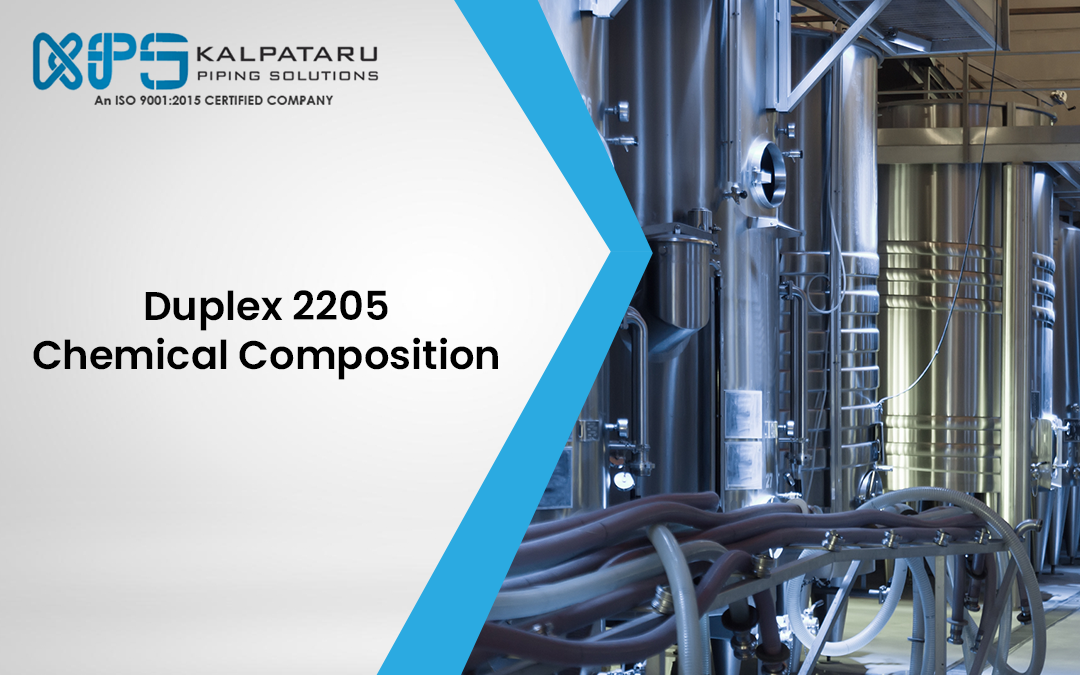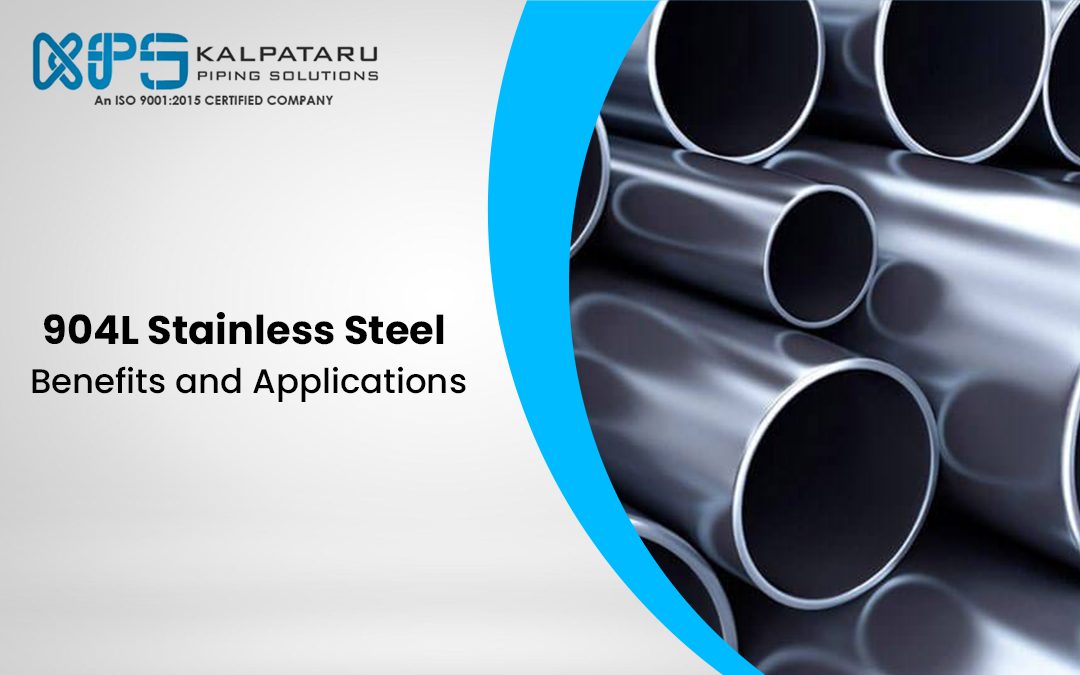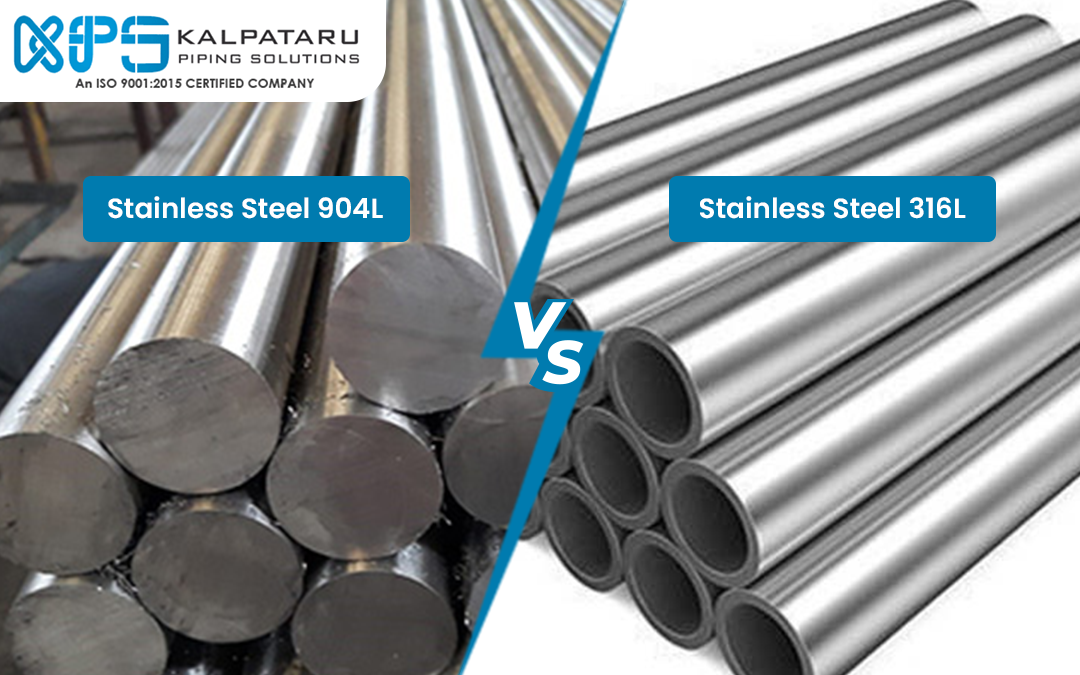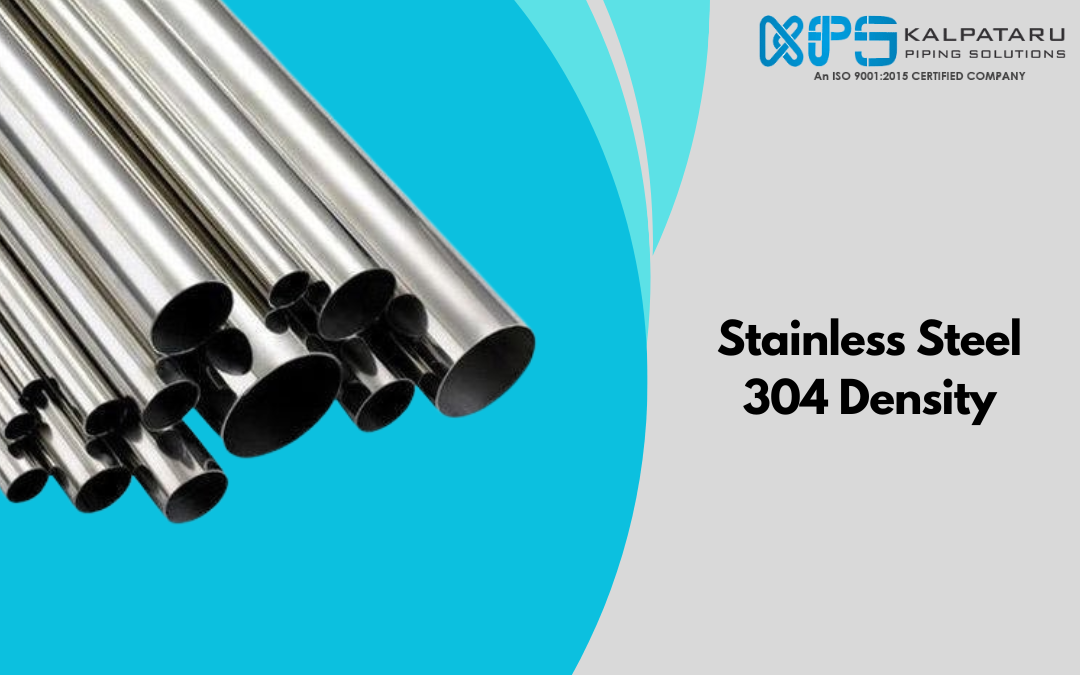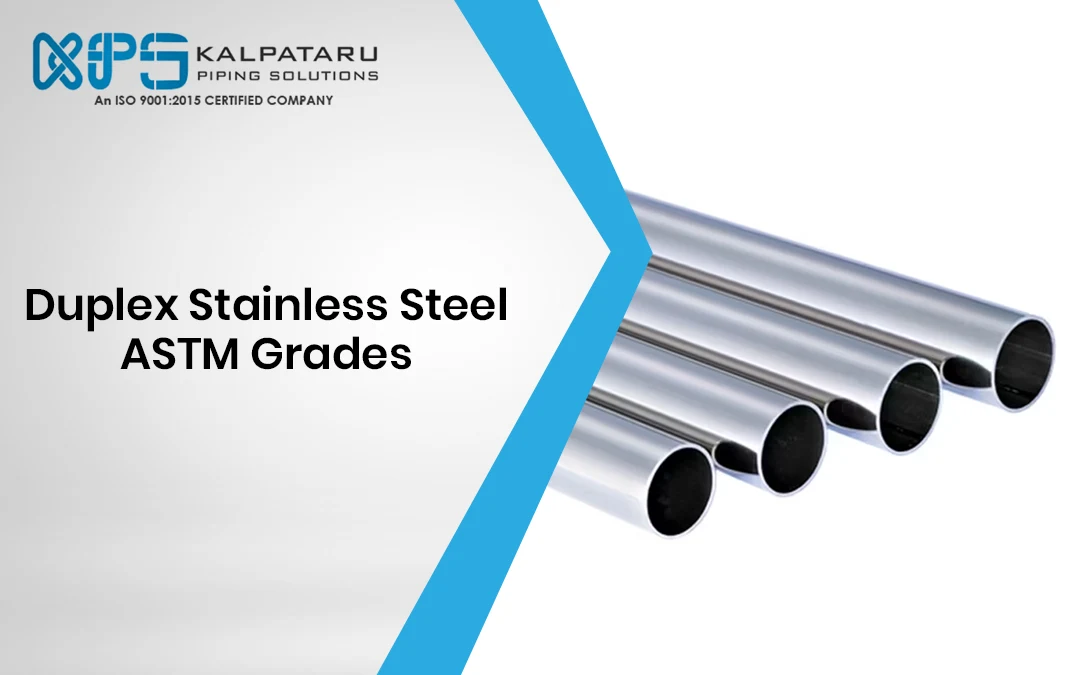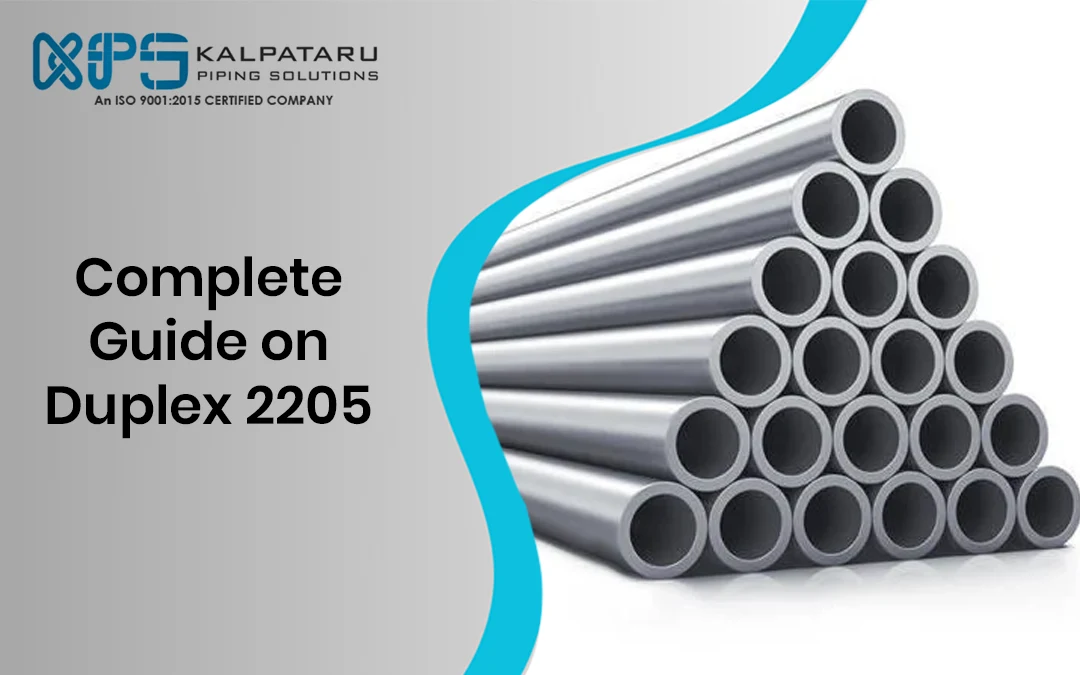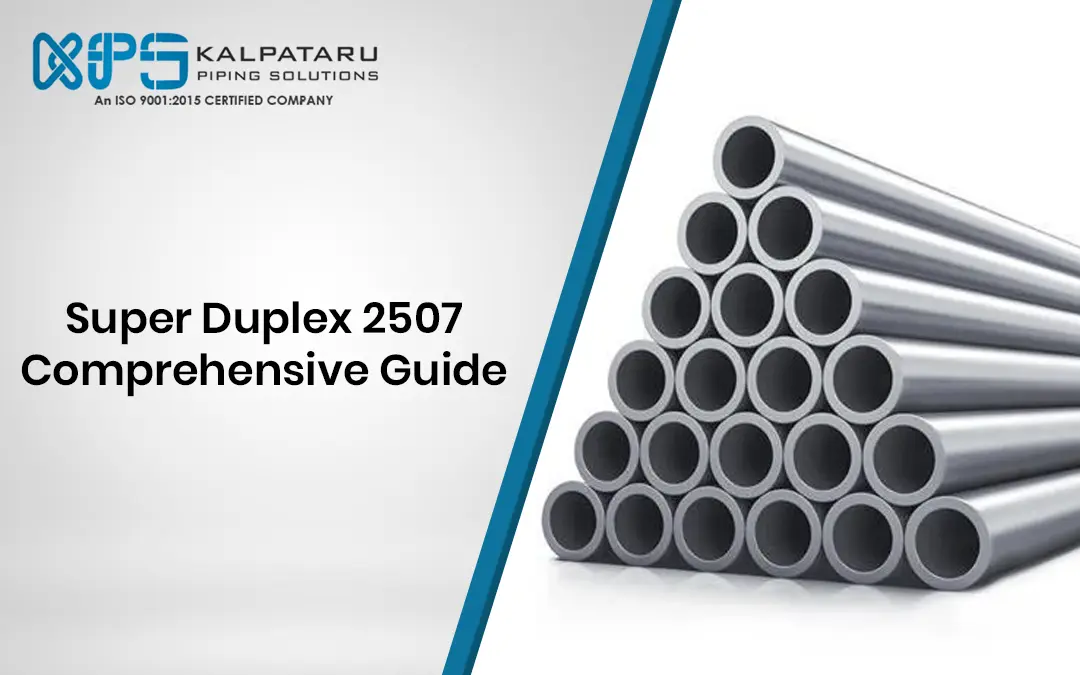Duplex 2205 stainless steel is a strong and durable material that combines two types of steel: ferritic and austenitic. This mix gives it great resistance to corrosion and strength, making it ideal for tough environments. Duplex 2205 is an upgraded version of the earlier S31803 grade, changed to UNS S32205 in 1996. These changes improve its ability to resist corrosion even more. Stainless steel 2205 duplex is widely used in industries like oil and gas, marine, and chemicals.
In this blog, we will explain Duplex 2205’s chemical composition and how it contributes to its impressive performance.
Understanding Duplex 2205 Chemical Composition
Duplex 2205 stainless steel is a highly corrosion-resistant material widely used in industries that require high strength and durability, such as oil and gas, marine, and chemical processing. 2205 chemical composition plays a key role in its performance and properties. It combines the best features of both ferritic and austenitic stainless steels, giving it a unique balance of strength and resistance to corrosion.
The chemical composition of Duplex 2205 typically includes:
- Chromium (Cr): 22-23%
Chromium is a key element in Duplex 2205, providing excellent corrosion resistance, particularly to pitting and crevice corrosion. It helps form a protective oxide layer on the steel’s surface, enhancing its durability.
- Nickel (Ni): 4.5-6.5%
Nickel improves the steel’s resistance to corrosion and increases its toughness, especially in low temperatures. However, the lower nickel content in Duplex 2205 compared to other austenitic steels contributes to its lower cost.
- Molybdenum (Mo): 3-3.5%
Molybdenum enhances steel’s resistance to chloride stress corrosion cracking and pitting. It helps improve the material’s performance in aggressive environments, such as those with high chlorides (e.g., seawater).
- Manganese (Mn): 1.5-2%
Manganese is an essential element that improves steel’s strength and ductility and helps stabilize its austenitic phase.
- Nitrogen (N): 0.08-0.2%
Nitrogen increases the strength of Duplex 2205 and helps to improve its resistance to pitting and crevice corrosion. It also enhances the material’s overall stability.
- Iron (Fe): Balance
Iron is the primary component of Duplex 2205, making up the majority of the alloy. It provides the basic structure and framework for the other elements.
- Other Elements:
-
- Silicon (Si): Up to 1%. Silicon contributes to the steel’s resistance to oxidation and enhances its overall strength.
- Carbon (C): Maximum 0.03%. Carbon content is kept low in Duplex 2205 to prevent the formation of carbides that could reduce its corrosion resistance.
The combination of these elements gives Duplex 2205 its distinctive properties: high strength, good weldability, and superior corrosion resistance. The balanced composition ensures the material can withstand challenging conditions such as high pressure, high temperatures, and exposure to harsh chemicals, making it a popular choice for demanding applications.
| Grade | C | Mn | Si | P | S | Cr | Mo | Ni | N | |
| 2205 (S31803) | Min Max | – 0.030 | – 2.00 | – 1.00 | – 0.030 | – 0.020 | 21.0 23.0 | 2.5 3.5 | 4.5 6.5 | 0.08 0.20 |
| 2205 (S32205) | Min Max | – 0.030 | – 2.00 | – 1.00 | – 0.030 | – 0.020 | 22.0 23.0 | 3.0 3.5 | 4.5 6.5 | 0.14 0.20 |
Corrosion Resistance of 2205 Duplex Stainless Steel
2205 duplex stainless steel offers a cost-effective and highly durable solution for applications where 300 series stainless steels are vulnerable to chloride stress corrosion cracking. duplex 2205 chloride resistance occurs when tensile stress is applied to stainless steel in environments containing chlorides, with susceptibility increasing as temperatures rise. The unique combination of chromium, molybdenum, and nitrogen in 2205 duplex stainless steel enhances its resistance to chloride pitting and crevice corrosion, making it suitable for challenging environments such as marine settings, brackish water systems, bleaching operations, closed-loop water systems, and specific food processing applications. Its superior composition provides greater corrosion resistance compared to commonly used stainless steels 316L and 317L, offering a reliable and long-lasting option for industries requiring high performance in corrosive conditions.
FAQs
What is the composition of 2507 material?
Alloy 2507 (UNS S32750) is a super duplex stainless steel with 25% chromium, 4% molybdenum, and 7% nickel designed for demanding applications which require exceptional strength and corrosion resistance, such as chemical process, petrochemical, and seawater equipment.
What is the difference between duplex 2205 and 2507?
Due to the difference in chemical composition, duplex steel 2507 is more resistant to corrosion than 2205, especially in environments containing chloride ions and acidic environments. Under the same conditions, 2507 is more resistant to corrosion, wear, pitting, and intergranular corrosion than 2205.
What is a 2507 duplex?
Duplex 2507 (UNS S32750) is a super duplex stainless steel with 25% chromium, 4% molybdenum, and 7% nickel designed for demanding applications that require exceptional strength and corrosion resistance, such as chemical process, petrochemical, and seawater equipment.

